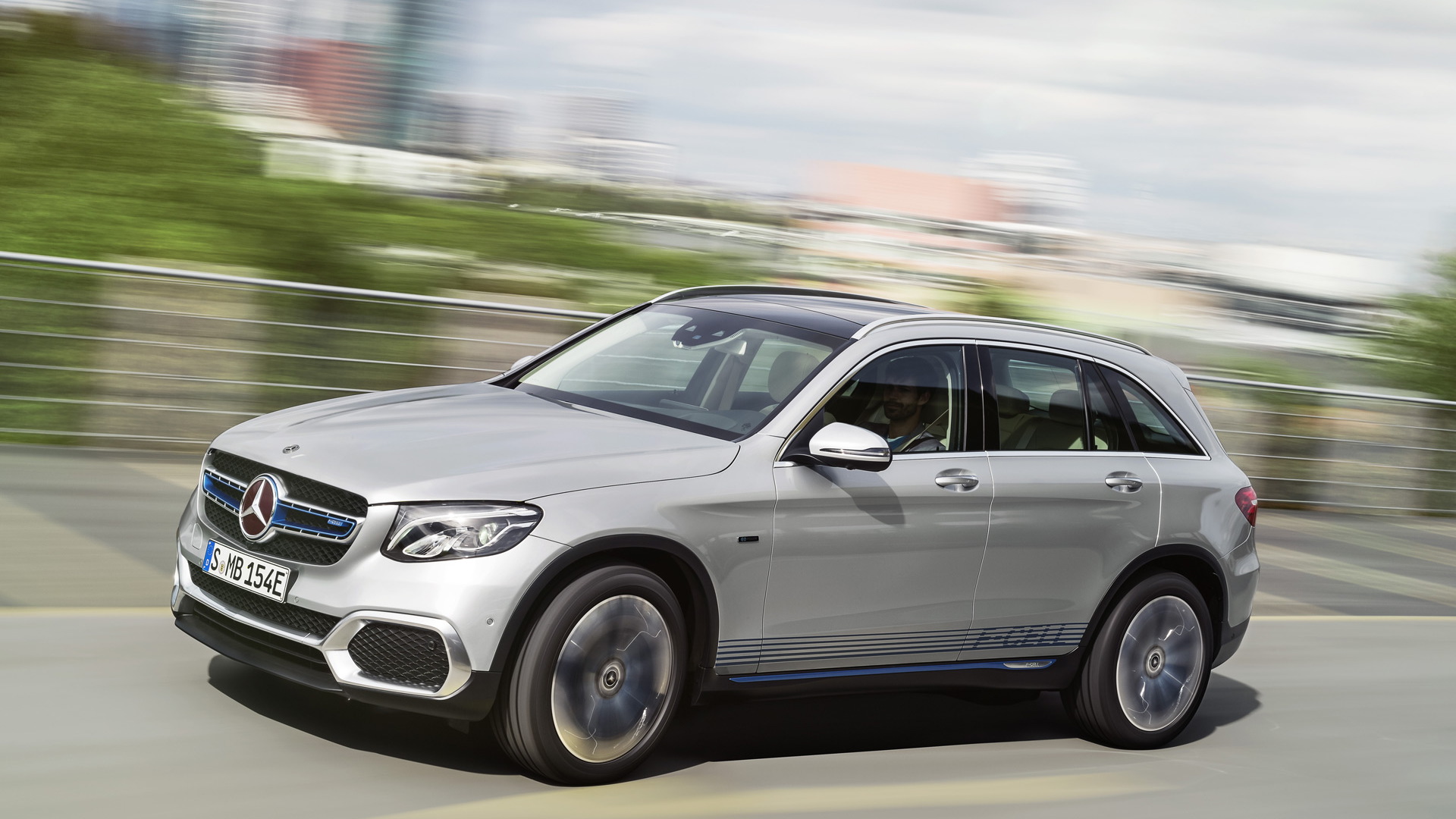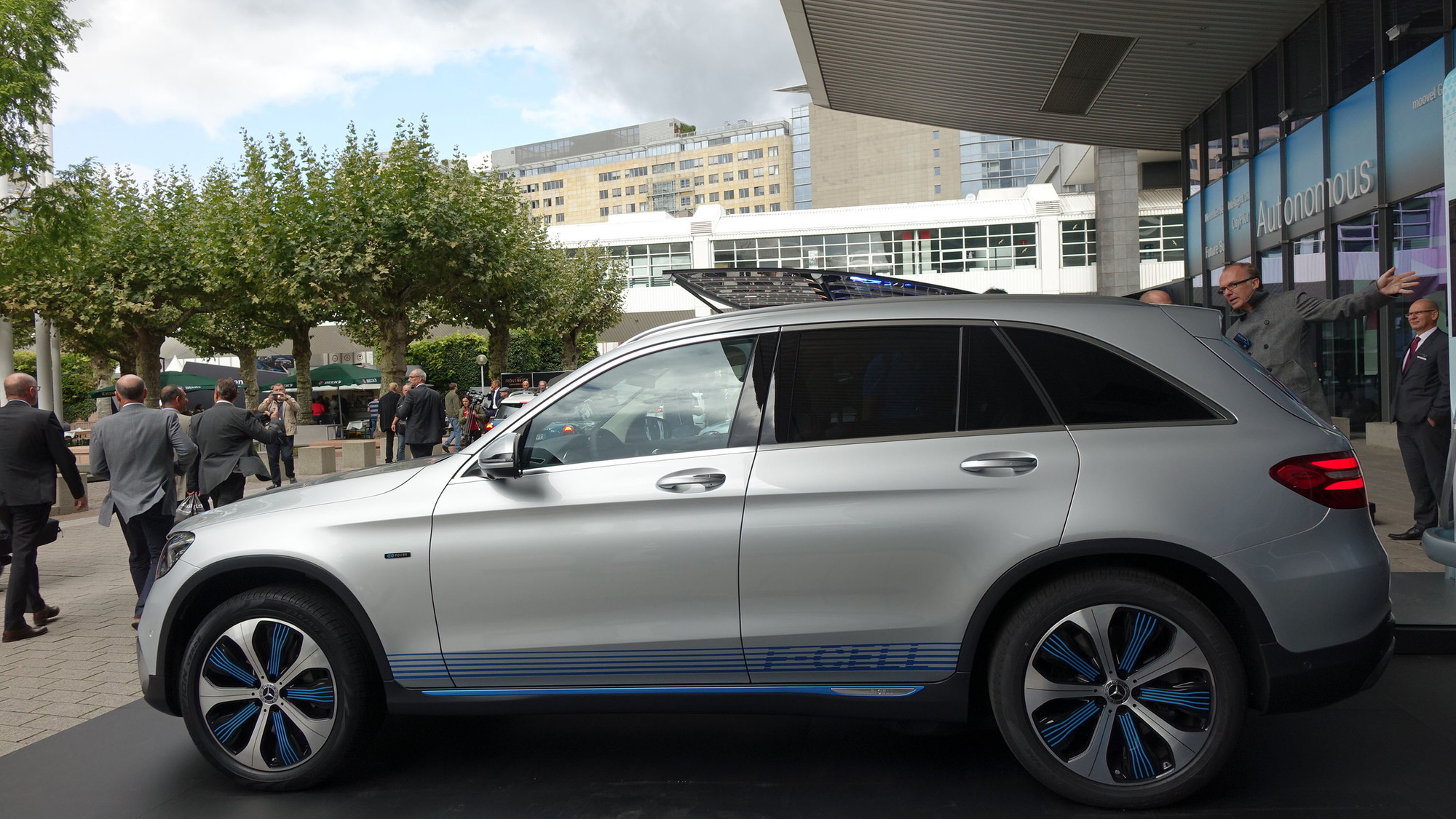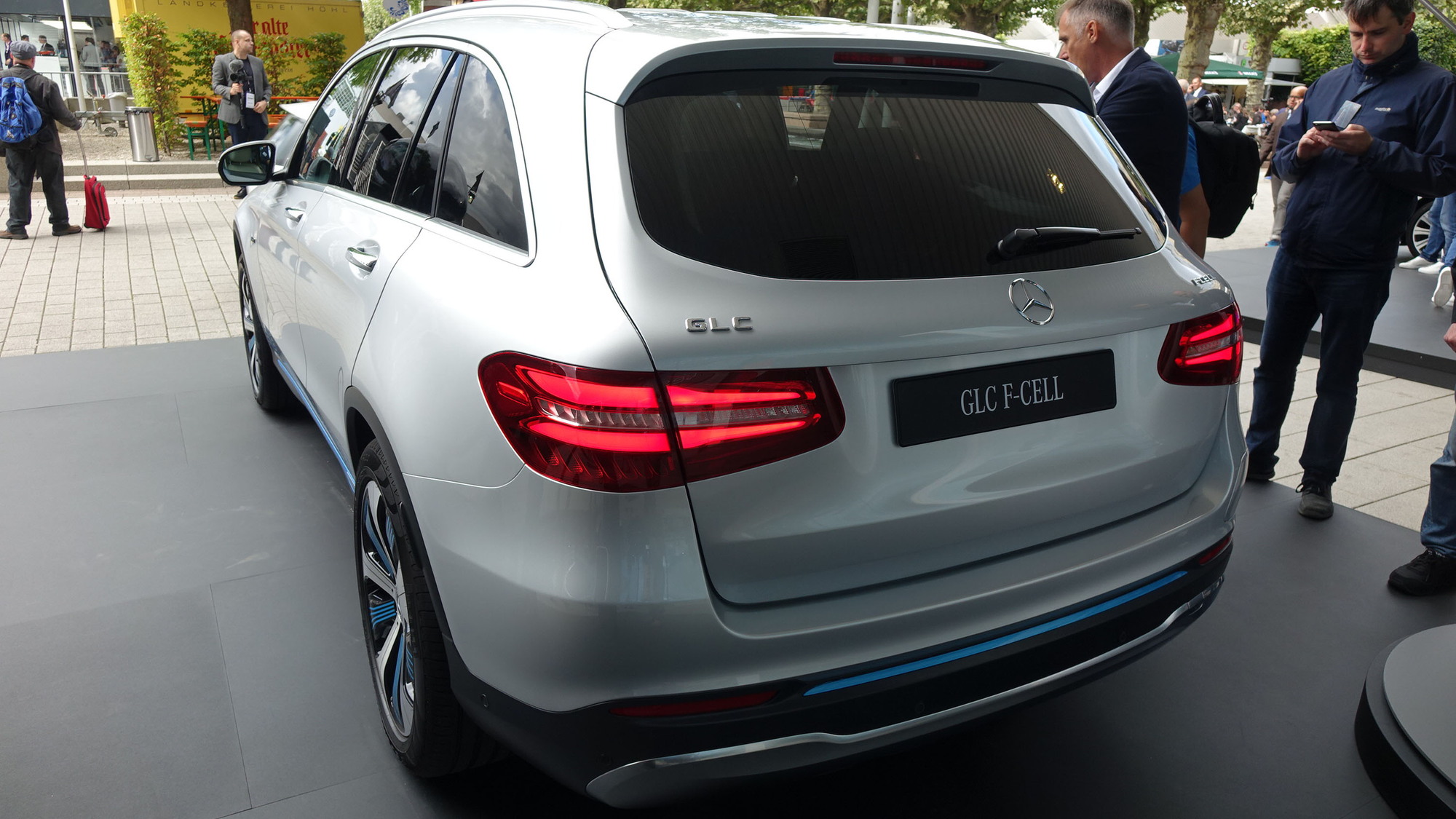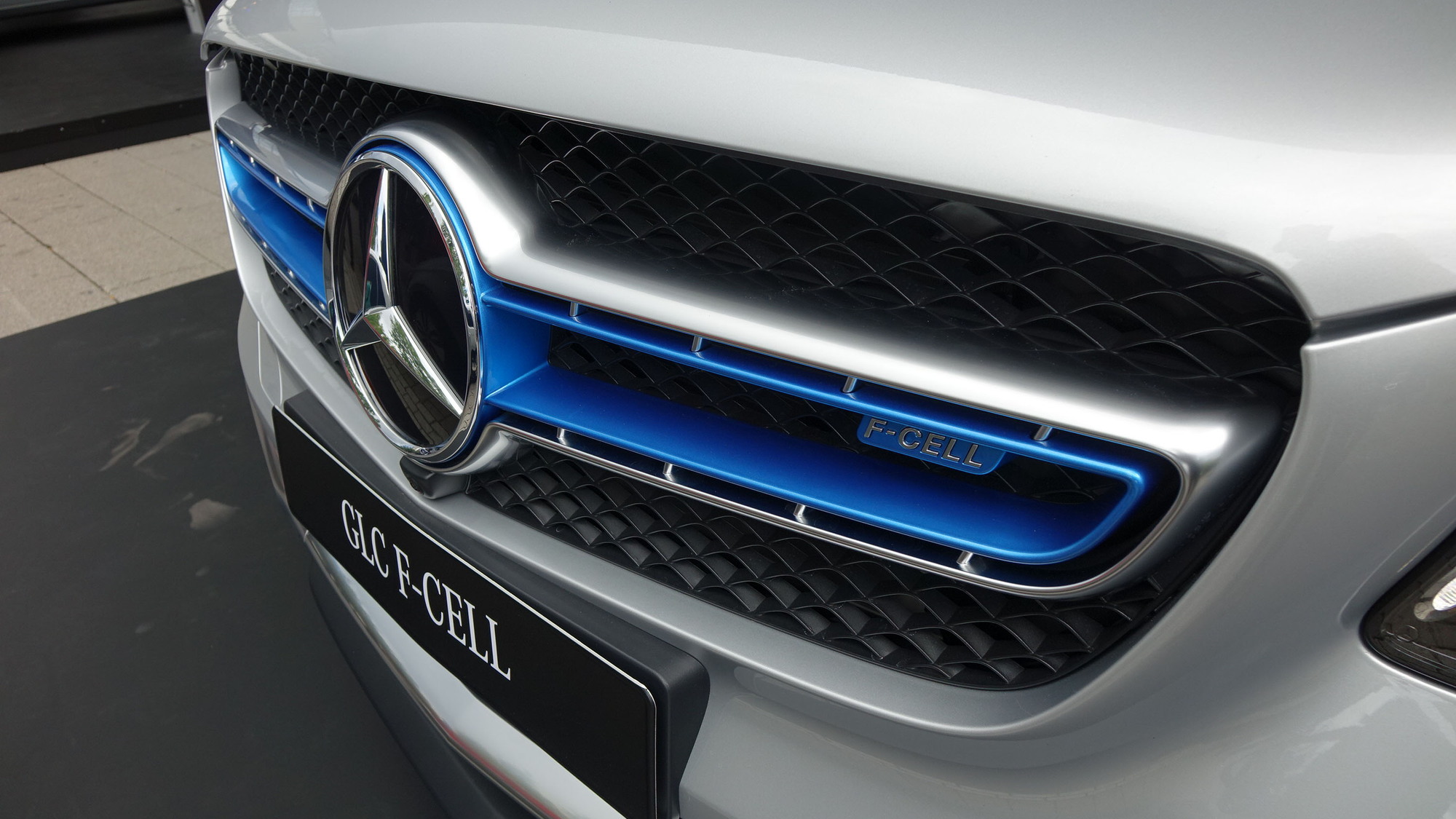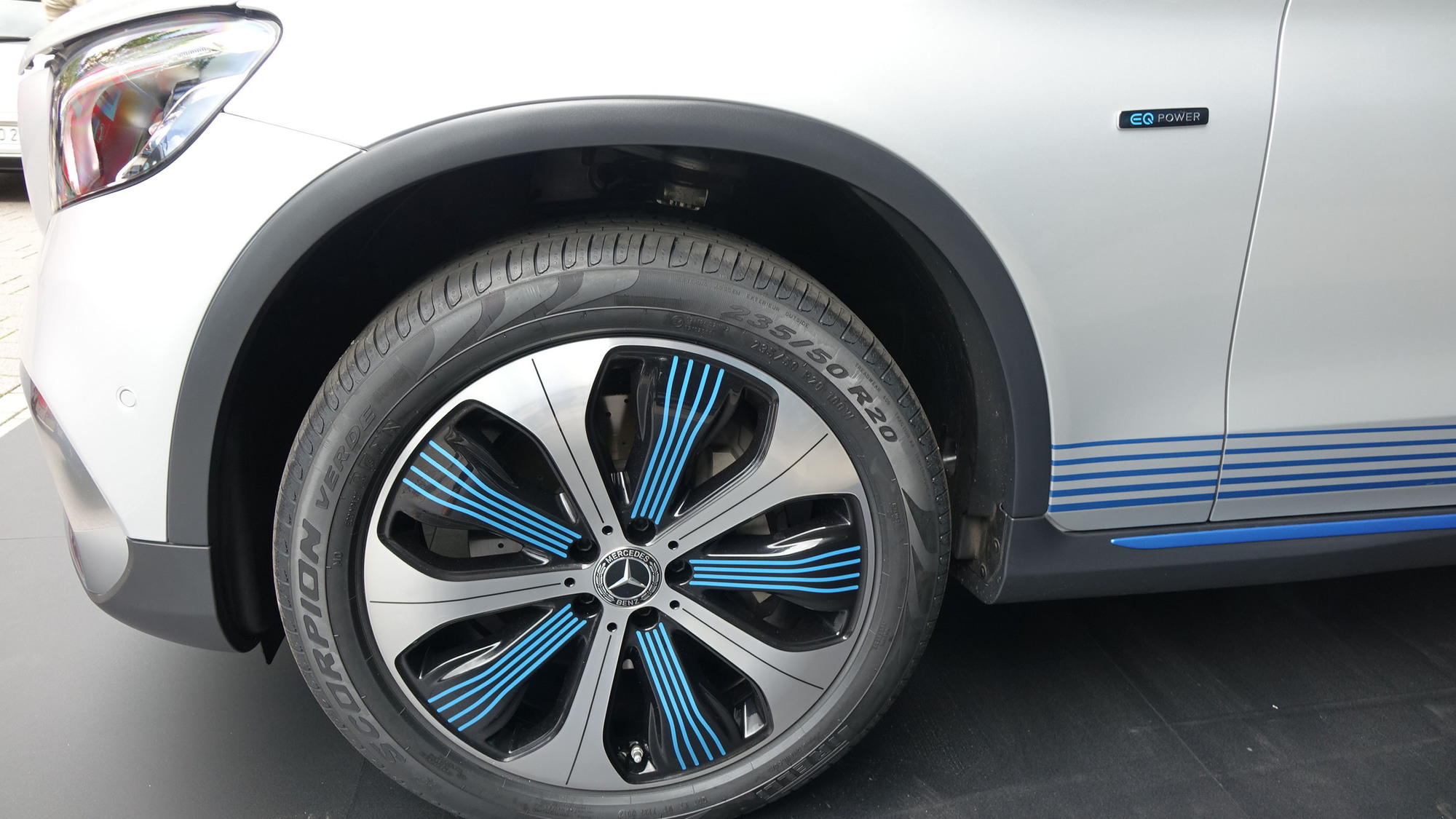It's a plug-in hybrid crossover, but it doesn't have an engine.
It's a hydrogen fuel-cell SUV, but it has a feature no other hydrogen-powered car offers.
It's the Mercedes-Benz GLC F-Cell EQ Power, launched Tuesday at the Frankfurt motor show.
DON'T MISS: Mercedes-Benz GLC to offer world's first plug-in fuel-cell powertrain (Jun 2016)
It's a vehicle, frankly, that has quite a lot going on inside its very expensive powertrain—and it's going into (low-volume) production two years from now.
Mercedes-Benz has experimented with hydrogen fuel-cell technology for a couple of decades, in pursuit of a practical zero-emission vehicle.
In 2013, it pooled its fuel-cell efforts with Nissan and Ford, at the same time postponing the announcement of its first hydrogen production car from 2015 to 2017.

Mercedes-Benz GLC F-Cell
That car has now arrived, though its production launch date is now scheduled for late 2019.
The barely disguised "concept" version shown in June 2016 gave us the basic outlines of the vehicle, however: it combines a 13.8-kilowatt-hour lithium-ion battery pack with a hydrogen fuel-cell stack under the hood powering a single electric motor on the rear axle.
When fully charged, the battery provides roughly 30 miles of range, and its hydrogen tanks store 4.4 kilograms (9.7 pounds) of high-pressure hydrogen, enough for 270 miles of range on the gentle NEDC test cycle.
READ THIS: Mercedes denies CEO said it will turn away from fuel-cell vehicles
The GLC F-Cell's advantage is that it can be charged at home or public charging stations for around-town use, providing a backup if hydrogen-fueling infrastructure is sparse in a particular region.
Regardless of whether the electricity comes from the fuel-cell stack or the battery, the single electric motor is rated at 147 kilowatts (197 horsepower) and 258 pound-feet of torque, with a top speed limited to 99 mph.
The emphasis inside the GLC F-Cell, however, is on normality: the interior can barely be distinguished from that of a standard gasoline GLC, one of the luxury brand's most popular models in North America.

Mercedes-Benz GLC F-Cell

Mercedes-Benz GLC F-Cell

Mercedes-Benz GLC F-Cell
The instrument cluster is larger, now with a 12.3-inch digital display, and the display in the center of the dashboard measures 10.25 inches.
Vehicle operating information applies to the new powertrain, of course, and menus offer location information for both charging stations and hydrogen fueling sites.
Sharp-eyed Mercedes buffs may notice that regular controller wheel for the infotainment system has been replaced by a multifunction touchpad with handwriting recognition that works much like the screen of a smartphone.
CHECK OUT: Early Mercedes fuel-cell driver's 'sobering assessment' to industry
This feature will soon make its way across the company's lineup, as—we suspect—the larger digital instrument and center displays may as well.
The GLC F-Cell was one of several advanced vehicles shown in Frankfurt by the various Daimler brands, including the Mercedes-Benz Concept EQA small electric hatchback that will go into production around 2020.
That electric car, one of three EQ concept vehicles so far shown by the company, will likely be built and sold in far higher volumes than the rather more complex and expensive hydrogen fuel-cell plug-in hybrid GLC crossover.
_______________________________________
